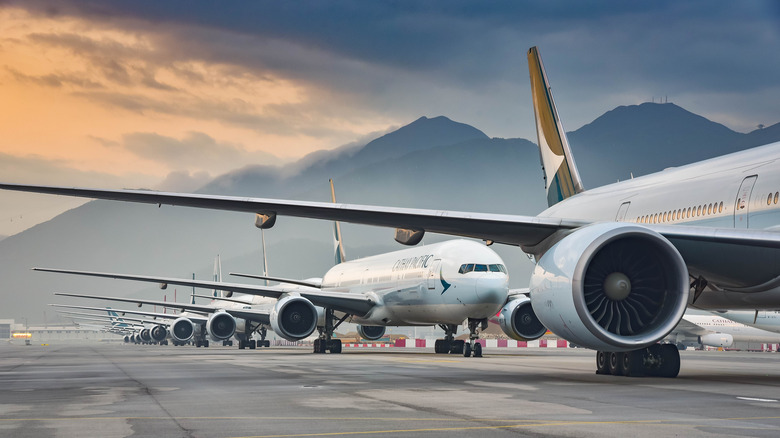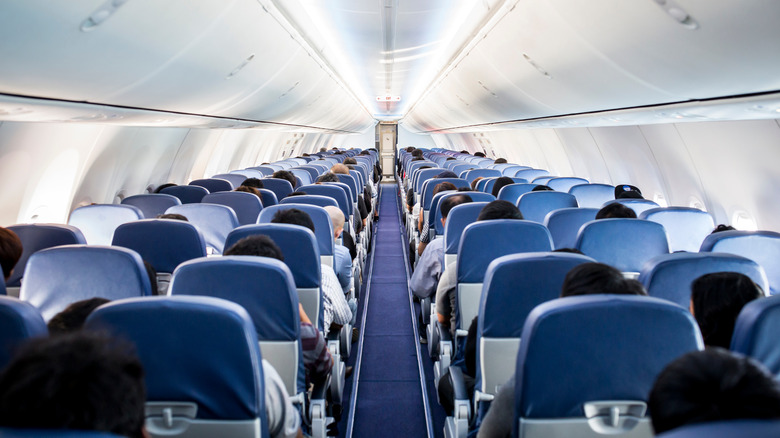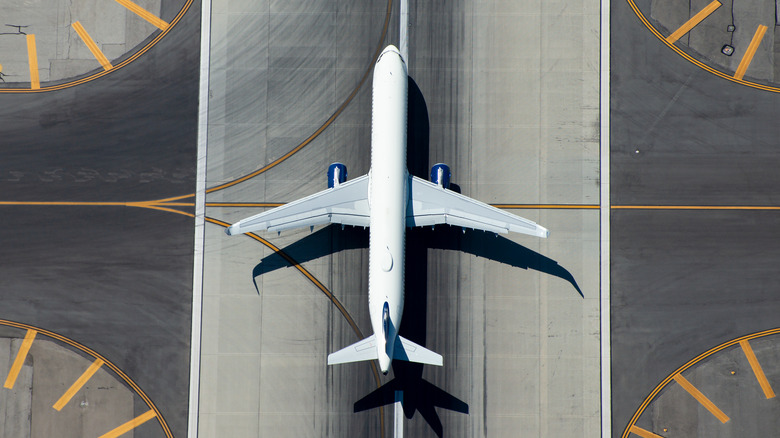Stranded On The Runway? These Are Your Rights As A Passenger
You've made it through airport security, boarded the airplane, stashed your luggage, and your vacation has properly begun. Except your plane is stuck on the tarmac, and you're going nowhere. Or worse, you've survived a long flight and are ready to deplane at your destination ... but again, you're going nowhere.
If you've never experienced a tarmac delay, lucky you. And while lengthy delays aren't that frequent, they certainly happen. The U.S. Department of Transportation (DoT) has rules in place governing what happens to passengers when the plane can't take off or passengers can't get off. Getting stuck on the runway can happen for a variety of reasons: bad weather can delay takeoff, or there may be a technical fault or an issue with the ground staff or air traffic control. A security threat or congestion on the runways or in the sky can also delay takeoff. If you're stuck for a while, the pilot or flight attendants will usually explain what's happening. Here's what you can expect as a passenger.
Tarmac delays in the U.S.
If you experience an extended delay at a U.S. airport, U.S. DoT rules apply. Firstly, during any tarmac delay, airlines must provide passengers with working toilets, comfortable temperatures in the cabin, and any necessary medical assistance. If the delay exceeds 30 minutes, airlines have to provide passengers with an update about the status of the delay.
If you're stuck on the runway for longer, the airline must provide you with a snack and drinking water before the two-hour mark hits. After this, there is a split in the rules depending on whether you're flying domestically or internationally. If you're on a domestic flight, the airplane should be moved to a safe location where passengers can disembark before three hours are up. For international flights, the limit is four hours. These time limits apply whether you're arriving or departing. The only exception is if it's unsafe to get off.
If you get off the aircraft, speak to ground staff to determine if you will be provided with any vouchers to spend in the airport or any other help or compensation. Be aware that in the U.S., airlines are not required to compensate you for delays. However, you can register a complaint with the airline if you feel you've been unfairly treated and, if the airline's response isn't satisfactory, with the DoT.
Delayed on the runway abroad
If you're stranded on the tarmac while in a foreign country, national rules apply. In Canada, passenger rights are similar to those in the U.S. when it comes to runway delays. The Canadian Transport Agency states that passengers must be provided with working bathrooms, reasonable quantities of food and drinks, and proper ventilation.
After a three-hour delay on Canadian tarmac, the plane must return to the gate to allow passengers to disembark unless there is a chance of takeoff in the next 45 minutes. The Transport Agency has rules for refunds of ticket prices if you arrive at your destination over three hours late, though exceptions apply. You could be entitled to CAD 1,000 if you arrive over nine hours late.
If you're in the European Union (EU), there's good news and bad news. Let's start with the bad: airlines are allowed to keep you on the tarmac for five hours before returning to the gate at EU airports. However, you will be permitted to apply for a refund if you arrive at your destination more than three hours late, unless the delay was due to extraordinary circumstances. Wherever your tarmac delay happens, call the airline to discuss compensation and check local regulations to know your rights as a passenger.


